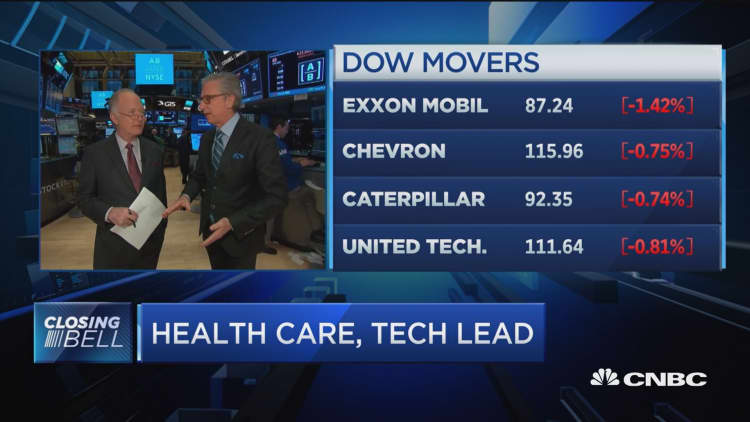Oil prices rallied for a second day on Thursday, supported by reports that key members of OPEC were starting to cut production and by forecasts of strong demand growth in China.
U.S. crude ended Thursday's session up 76 cents, or 1.5 percent, at $53.01. Brent crude futures were up 98 cents, or 1.8 percent, at $56.08 a barrel by 2:38 p.m. ET (1938 GMT).
The Organization of the Petroleum Exporting Countries agreed in November to cut oil production to try to reduce a global supply glut that has depressed prices for more than two years. Several OPEC members appear to be implementing the deal.
"All the focus is now on OPEC compliance, which seems to be moving ahead as planned," said Bjarne Schieldrop, chief commodities analyst at SEB Markets in Oslo.

Saudi Energy Minister Khalid al-Falih said on Thursday the kingdom had cut production to its lowest in almost two years, a move that would help accelerate a rebalancing of the global oil market.
Falih told a conference in Abu Dhabi global demand for oil would grow by well over 1 million barrels per day (bpd) in 2017 and the market would tighten in two to three years.
Saudi Arabia has cut February term crude supplies to refiners in India and Southeast Asia, seeking to comply with an OPEC deal, but it has held most of its exports to the rest of Asia steady for a second month, industry sources said on Wednesday.
Kuwaiti Oil Minister Essam Al-Marzouq told the conference Kuwait had already cut its oil output by more than it promised under the OPEC deal, without giving further details.
Iraq oil minister Jabar Ali al-Luaibi told reporters Iraq was "hoping for a better price." Iraq had reduced its oil exports by 170,000 bpd and was cutting them by a further 40,000 bpd this week, he said.
Separately, Russia's Energy Minister Alexander Novak said the country was starting to implement its own planned cuts, in conjunction with an agreement among non-OPEC producers to reduce output.

"The idea is that if these producers honor their word, they'll take close to two million barrels off the market," said Gene McGillian, manager of market research at Tradition Energy in Stamford, Connecticut.
He said U.S. crude should continue to trade between $50 and $55 a barrel, but may have difficulty breaking through the upper end of that range.
BMI Research estimated overall compliance with production cuts at about 73 percent, led by high compliance from members of the Gulf Cooperation Council, namely Saudi Arabia, the United Arab Emirates, Kuwait, Qatar, Bahrain and Oman.
Prices were also lifted by news of record Chinese car sales, which grew by 13.7 percent between 2015 and 2016 to 28 million sold vehicles.
Reflecting China's growing fuel consumption, its net crude imports will rise 5.3 percent to 396 million tons (around 8 million bpd) in 2017, state-owned China National Petroleum Corp (CNPC) said on Thursday. Its crude demand will hit a record 594 million tons this year (around 12 million bpd), CNPC said.
In the United States, traders said an inventory report published by the U.S. Energy Information Administration on Wednesday implied oversupply. Crude stocks unexpectedly rose by 4.1 million barrels to 483.11 million barrels.

